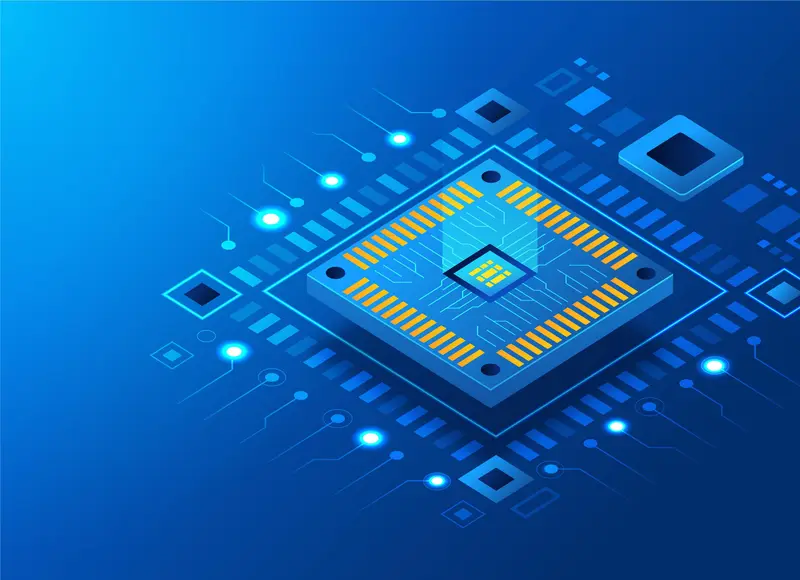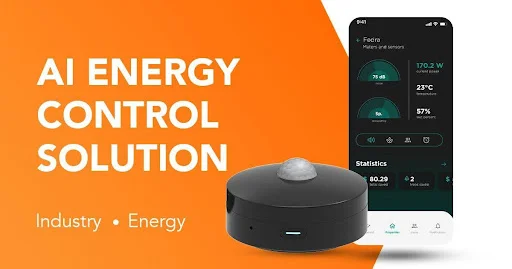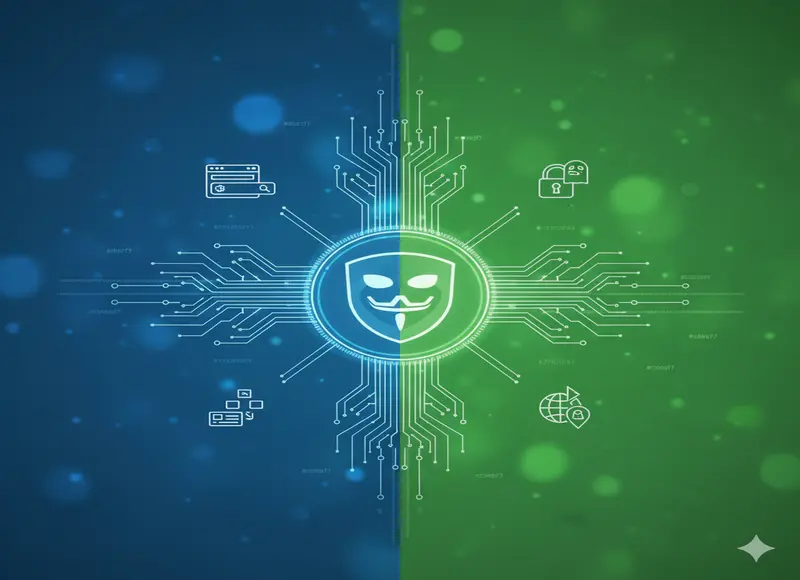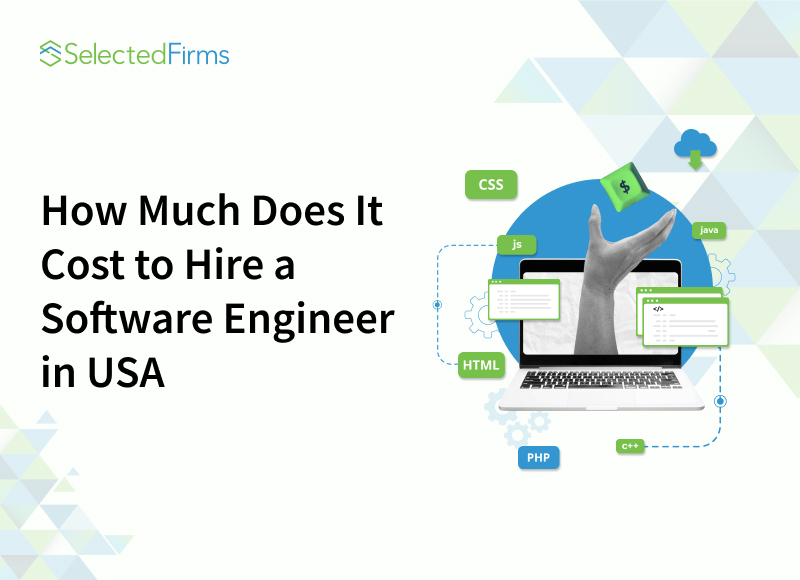Table of Contents
Embedded firmware is the hidden intelligence behind IoT and industrial systems, powering secure communication, energy efficiency, and device reliability over time.

Embedded firmware is the less noticeable part of every connected product. It is neither flashy like user apps or dashboards, nor as concrete as the physical hardware. But it is firmware that unobtrusively makes devices boot up properly, talk securely, consume power wisely, and remain reliable over years of use in the field.
Firmware failure makes devices unstable, destroys network data integrity, and causes expensive business downtime. With robust firmware, products scale effectively, customers have confidence in them, and companies save millions on the efficiency of operations.
This article explores the concept of firmware by combining insights from academic research and real-world project experience. We will look at what firmware is, why it plays such a critical role in modern systems, key considerations for designing it, and a practical example of how firmware can be applied to intelligently manage energy.
What Is Embedded Firmware & Why It Matters
Firmware refers to a kind of software that is embedded into the hardware of a device and typically microcontrollers or system-on-chips. Firmware is very limited compared to general-purpose applications, which run on desktops or smartphones. It is often required to run on processors that have limited memory, limited storage, and very low power requirements, yet provide valuable, high-reliability features.
Consider firmware to be the operating rules that are invisible to the user, which determine how a device operates:
- Hardware Layer: actuators, sensors, processors.
- Firmware level: initialization, drivers, secure communication, and real-time control.
- Application layer: Mobile App, Cloud, AI analytics.
Without the firmware layer, hardware is inert, and application software has nothing to talk to.
Types of Embedded Firmware
- Bootloaders - those that power up and initialize hardware.
- Drivers and middleware- deal with communication between hardware and system resources.
- Application firmware - specifies the individual behavior of the device, e.g., scanning barcodes, energy data analysis, and face recognition.
This implies that firmware is not only code, but it is the connection point between hardware and business logic.
Core Responsibilities of Firmware in IoT & Industrial Systems
It is only when one looks at what firmware actually allows that the actual significance of firmware becomes clear.
- Initialization and control of a device: Firmware provides that each device, a camera, or a Bluetooth chip, is configured appropriately when it boots up. Devices can never even wake up without it.
- Communication protocols: Firmware runs low-level communication stacks, whether it is BLE on wearables, LoRa on smart agriculture, or Wi-Fi in consumer IoT.
- Power management: A lot of IoT devices have to be able to last for years with a single battery. Firmware controls when the sensors are activated and sleep modes, and the frequency of communication to conserve battery life.
- Security: In modern firmware, secure boots, encryption, and authentication are used. One vulnerability may enable hackers to control fleets of devices.
- Real-time decision-making: Edge intelligence is made possible by firmware. Devices can be used to process important information locally, so that they can respond immediately rather than sending all data to the cloud.
- Over-The-Air updates: The businesses can push new features or security patches to devices without even touching the devices, which saves a lot of cost in terms of maintenance.
Business takeaway: Good firmware has a direct cost reduction, customer trust, and scalability of IoT deployment.
Key Technical Challenges in Firmware Development
Firmware development is not another programming language. It is associated with special challenges that companies and engineers should expect in advance.
|
Challenge |
Technical Detail |
Business Risk if Ignored |
|---|---|---|
|
Limited resources |
256KB RAM, <1MB flash memory typical in MCUs |
Devices crash, features can’t scale |
|
Power efficiency |
Needs milliwatt-level optimization for battery life |
Frequent replacements, high maintenance costs |
|
Security |
Secure boot, signed firmware updates, encryption |
Hacking, data leaks, regulatory penalties |
|
OTA reliability |
Must handle interrupted updates, rollback scenarios |
Bricked devices in the field |
|
Debugging complexity |
JTAG, oscilloscopes, and hardware-in-the-loop needed |
Extended time-to-market, higher costs |
|
Certification & compliance |
Medical, automotive, industrial standards |
Market access blocked or delayed |
Unlike cloud or mobile development, firmware engineering means balancing every byte, every milliwatt, every instruction.
Firmware Development Process
A disciplined process is essential for reliable firmware. Skipping steps usually means expensive redesigns later.

1. Requirements & Analysis
All successful firmware projects start with clear crystal requirements. In contrast to general software, firmware may run devices that have been deployed in the field for many years, and updates may be infrequent and constrained. This necessitates the importance of requirement gathering.
Key aspects:
- Hardware limitations: the size of flash memory, RAM, and the processing power of the MCU.
- Power budget: What is the required life of the device on a battery? Weeks, months, or years?
- Wi-Fi, BLE, LoRa, Zigbee connectivity: All of these protocols have consequences in terms of latency, range, and energy consumption.
- Security requirements: encryption requirements, authentication requirements, regulatory requirements (e.g., IEC 62443 in industrial control).
Failing to define these upfront often results in expensive redesigns later.
2. Architecture Design
After the requirements have been set, engineers plan the firmware architecture. The step identifies whether the solution is scaled or will fall under complexity.
- Layering: hardware abstraction (HAL), middleware (drivers, RTOS), and application logic are decoupled, so dependency headaches are gone.
- Real-Time Operating Systems (RTOS): operating systems such as FreeRTOS, Zephyr, or ThreadX provide multitasking, scheduling, and better resource management.
- Communication stacks: libraries of BLE or LoRaWAN are integrated at this level, which prevents rework.
- Security-first design: the initial design should contain secure boot chains, modular encryption libraries, and update protocols.
3. Coding & Implementation
C or C++ is usually used in firmware development since they are fast and allow hardware control. Rust is gradually picking up in safety-critical areas, but its use is not mainstream yet.
Best practices:
- Driver-level implementation: creating an effective code of sensors, actuators, and communication chips.
- RTOS tasks: executing real-time processes like sensor sampling or communication without blocking other tasks.
- Code optimization: reducing memory footprint through reuse of buffers, static memory allocation, and optimization of interrupt handlers.
- Coding standards: MISRA-C rules are usually used in the automotive or industrial sectors to minimize the risk of unsafe coding.
Tools:
- Compiler & tool chains: GCC, Keil, IAR Embedded Workbench.
- Version control: Git combined with CI/CD pipelines regression testing.
4. Integration with Hardware
It is the phase of theory versus reality. Even the purest code has to be checked against real hardware.
- HAL (Hardware Abstraction Layer): makes it portable between MCUs of various vendors (STM32, NXP, TI).
- Peripheral testing: ensuring that UART, SPI, I 2 C and GPIO work properly with sensors and actuators.
- Custom PCB verification: verifying power regulation, clock stability, signal integrity at the firmware level.
- Debugging: JTAG, SWD and oscilloscopes are essential to debug low-level behavior.
One of the pitfalls is the failure to perform early integration tests. Embrox does not do this because it employs hardware-in-the-loop testing environments at the very earliest stages of development.
5. Testing & Quality Assurance
Firmware QA is much more difficult than testing ordinary software, and more important. Failure diagnosis can be very expensive once the devices get into the field.
Testing layers include:
- Unit testing: verification of functions in isolation (such as Ceedling).
- Integration testing: making sure drivers, middleware, and application layers play along.
- Stress testing: operating equipment at high temperatures, voltages or loads.
- IoT automation testing: hardware-in-the-loop testing hundreds of devices in a laboratory to identify scaling problems.
- Regression testing: new OTA updates do not break the old functionality.
Best practice: continuous integration pipelines that test emulators, real boards.
6. Deployment & Maintenance
Development of firmware is not complete at the first shipping version. Maintainability and update strategy are key to long-term success.
- Remote monitoring: firmware must have self-reports (logs, error states) to cloud dashboards.
- Version control: rigid versioning allows fleets of devices to be tracked and controlled.
- Documentation: accurate records of APIs, hardware dependency, and build environments ensure that it is maintainable over the years.
Best Practices in Firmware Development
With an organized lifecycle, however, success is determined by the consistency with which teams employ established practices. During the last several years, the embedded software developers have narrowed down a number of best practices that minimize risk, enhance maintainability, and prolong the lifetime of IoT and industrial systems.
- Design to be modular - divide firmware into clearly defined layers (HAL, middleware, application) such that hardware and business logic changes do not necessitate rewriting of the entire codebase.
- Be energy efficient - use low power modes, adaptive duty cycle, and efficient interrupt processing to maximize battery life of the device.
- Security & OTA updates- make sure that devices can receive secure updates over the air, encrypted, with rollback protection, and strong authentication.
- Automate testing: apply unit testing, hardware-in-the-loop environments, and IoT automation frameworks to identify problems early and in volume.
- Adhere to coding guidelines - use MISRA-C or other coding standards to achieve safety, readability, and long-term maintainability.
- Employ continuous integration pipelines - combine builds, regression tests, and static analysis into development processes.
- Write it all down - keep technical documentation to assist in compliance, audits, and future engineering teams.
- Test on real hardware early, emulators are fine, but the only way to reveal timing, power, or signal integrity problems is to test on real hardware.
- Plan long-term maintenance - firmware is a living product and it needs to adapt to new threats, features, and business needs.
Insight: Companies that treat firmware as a living asset — not just a one-time build — achieve far better ROI on IoT investments.
Case Study: AI Energy Control by Embrox

In order to see how the firmware is used in practice, we can examine a real project created by Embrox Solutions, which is a well-known embedded development company, the AI Energy Control system.
Business challenge: The Company required a means of streamlining energy usage within big facilities without necessarily depending on costly cloud computing or human supervision. The solution was required to gather sensor data, make smart decisions on a local basis, and yet offer centralized control.
Firmware’s role in the solution:
- On-device intelligence: The system was able to respond immediately to fluctuations in energy demand without transmitting each datapoint to the cloud because the firmware executed lightweight AI models on the resource-constrained microcontrollers.
- Integration of sensor and actuator: Firmware was able to control various inputs (temperature, light, power usage sensors) and synchronize the outputs (HVAC control, lighting systems, or automated switches).
- Safe and sound communication: Data transmitted to the cloud was encrypted, and the firmware had the capability to use authentication protocols to block unauthorized access.
- OTA updates: Embrox engineers have adopted a strong OTA mechanism that has rollback safety. In case of failure of an update, the device would automatically roll back to its former stable state.
- Power optimization: The logic of the firmware was such that the system was efficient without wasting energy unnecessarily, which is ironic, as it sounds, the device that was meant to optimize energy had to be optimized in terms of energy consumption as well.
Key Technical Challenges Solved
- Running AI on constrained hardware ? Optimized multithreading and memory allocation at the firmware level.
- Ensuring update reliability ? Built-in rollback and checksum verification during OTA updates.
- Guaranteeing security ? Secure boot and firmware encryption hardened the system against tampering.
Result: The solution reduced operational costs, improved sustainability, and provided a scalable platform for smart energy management. Without robust firmware, the system could not have delivered real-time efficiency.
Industrial vs Consumer IoT Firmware Needs
Although both industrial and consumer IoT depend on firmware, their priorities are very different.
|
Aspect |
Industrial IoT |
Consumer IoT (e.g., wearables) |
|---|---|---|
|
Lifecycle |
Devices expected to function for 10–15 years |
1–3 year refresh cycle |
|
Power profile |
Stable under continuous use |
Extreme efficiency for small batteries |
|
Reliability |
Zero tolerance for downtime |
Occasional failures tolerated if UX is good |
|
Certification |
Heavy regulation (ISO, IEC, sector-specific) |
Primarily FCC, CE, and safety standards |
|
Updates |
Stable OTA with minimal disruption |
Frequent feature updates expected |
|
UX focus |
Functionality and uptime first |
A seamless user experience is critical |
The lesson to the business is obvious: firmware strategy should follow product positioning. A factory monitoring system is not a smartwatch and vice versa.
Firmware Development 2025 Trends
Firmware is changing at an accelerating rate with IoT and Industry 4.0. Among the most significant trends that will define the future, there are:
- Firmware engineering with the help of AI. Not only is machine learning being used in the devices, but also in the firmware development process itself - helping engineers to develop, test, and optimize code.
- Reusable, modular firmware. Rather than starting afresh, increasing numbers of companies are turning to firmware libraries and frameworks, which speed up development and minimise bugs.
- Increased security baselines. Secure boot, signed updates, and full encryption are no longer a choice, but rather an expectation of the industry.
- IoT test automation. Manual QA is not possible as networks grow to thousands of devices. Automated models to imitate various conditions will prevail.
- Integration of edge computing. There is more intelligence moving to the device. Local decision-making will be done more and more in firmware to minimize latency and bandwidth consumption.
Business insight: Companies that predict these trends and develop firmware that can be adapted in the future will not have to redesign their products at a late stage at a high cost.
Conclusion
The invisible and yet crucial basis of IoT and industrial innovation is firmware. It is tasked with the role of making hardware intelligent, reliable, and secure. The example of AI Energy Control demonstrates how firmware can turn an idea into a scalable cost-saving business asset, power management with on-device intelligence, and secure cloud integration.
The complexity of IoT deployments increases, and it is non-negotiable that the embedded firmware development should be done by experts. Companies with a strong firmware strategy become resilient, efficient, and competitive.









